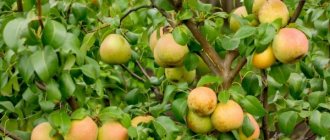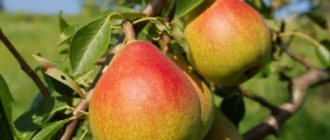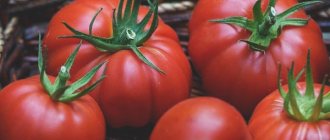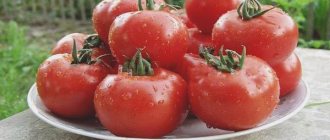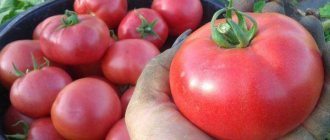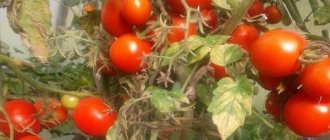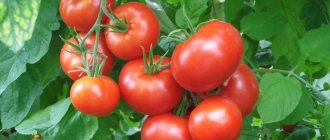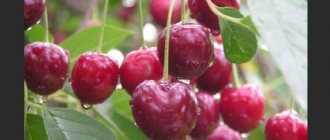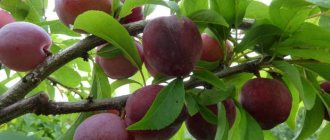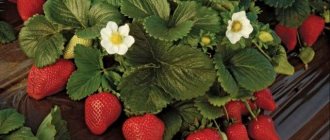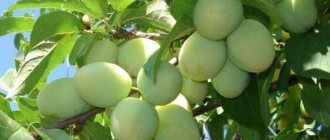Gardening » Pear
0
1068
Article rating
Kira Stoletova
Svarog pear is an early autumn variety characterized by a pleasant taste and excellent commercial qualities. In most cases, gardeners grow it for sale or for their own use. We will consider a detailed description of the variety in the article.
Description of Svarog pear
A brief excursion into history
Obtaining frost-resistant hybrid varieties for Siberian gardens was the primary task of scientists at the M. Lisavenko Research Institute of Science and Technology, which they have been solving since 1973. At the moment, branches of the research institute and garden plots for experiments are located in 3 regions: Tomsk, Altai, Barnaul.
M.A. Lisavenko, who devoted himself to Siberian gardening and created more than one hundred and twenty-eight varietal forms of fruit and berry plants, is no longer alive, however, selection is in full swing and among new varieties are pear varieties that are resistant to winter, which named after Slavic gods, for example, “Svarog”, “Perun”, “Veles”, “Lel”, “Kupava”.
Among pre-Christian humanity, Svarog was listed as the father of all that exists; he was the earthly incarnation of the Family. What is the meaning of this name of a hybrid variety?
Preparing for landing
Selecting a location
First of all, special attention should be paid to the planting site and the quality of planting material. Give preference to well-lit areas that are located 3 m from the household shelter. For example, the wall of your house will become an excellent protector from drafts and strong gusts of wind. Pay attention to groundwater. They should be located at least 2-3 m to the surface. Shallow groundwater can cause the root system to begin to rot.
Pear Svarog: advantages and disadvantages
Pear Svarog: photo of variety
Advantages of the Svarog pear variety:
- Undoubted resistance to harsh winter Siberian conditions (down to minus thirty degrees).
- The fruits ripen before the first cold snap (September-October days).
- The harvest is average, but regular.
- Good marketability of fruits.
- Fruits can be stored for up to three months.
- The taste is excellent.
- The variety is good for processing on a large scale.
- Immunity to fungal and bacterial diseases.
Winter-resistant pear varieties: “Severyanka”, “Bere Russkaya”, “Yakovlevskaya”, “Uralochka”, “Chizhovskaya”.
Cons of Svarog pear:
- Fruit size (small).
- It cannot pollinate on its own; it requires helpers for pollination.
- The crown is thickened.
- The variety is susceptible to the effects of dry periods.
For reference . Pear Svarog loves light very much, but does not tolerate dry times; Frost resistance is lower than that of well-known cherry and apple varieties from the same regions.
Diseases and pests
Pear Svarog is immune to most diseases. It is extremely rarely affected by scab. Its fruits are resistant to rot.
However, pests can cause great harm. One of the most dangerous is the codling moth. In the fight against it, preventive measures are important. In the fall, fallen leaves are removed and burned, and the soil is dug up. In the spring, the dead bark is cleared and a layer of lime is applied to the tree trunks. In summer, traps are used and trees are sprayed with infusion of wormwood or tomato tops.
The trunks of young trees are covered with spruce branches or agrofibre for the winter, so that hares and roe deer do not feast on the bark and young shoots.
Svarog pear: features of the variety
Pear Svarog: photo of variety
The Svarog pear was created by hybridizing the pear varieties “Ussuriyskaya” (has winter resistance) and “Bere Bosc” (an old variety of late ripeness from France).
From the Bere Bosk variety, the pear variety Svarog inherited: immunity to scab and other infections caused by fungi; marketability of pears and their unusual taste; increase in yield as the tree matures; unpretentiousness to the composition of the soil with optimal watering.
From the pear species “Ussuriyskaya”: the Svarog pear is capable of changing during clonal selection. Resistance to frosty times. Resistance to dry periods. Unpretentiousness to the composition of the soil.
But the pears of this attractive hybrid are not very pleasant in taste and are small in size; you need to wait for them twenty years after planting a young tree.
For reference . The large amount of fiber in pears can remove harmful cholesterol from the human body. The astringent taste of most Russian varieties is due to the content of tannins in the fruits - these are natural preventive components against salt deposits. Taste receptors can easily identify stony cells in the internal contents of the fruit - this is its supporting tissue. In wild varieties, these cells are more pronounced, which creates a crunch when you bite into a pear.
Features of cultivation
In the harsh Siberian climate you can grow delicious fruits. The main thing is to make the right choice and decide on the variety of pears. Thus, the Svarog pear variety, when grown correctly, will certainly please the gardener with a good harvest. It is worth considering that pear trees love bright places, because in the shade their small branches will die off and the yield will decrease.
In summer, Siberian pear varieties need additional irrigation. Also for pear trees, the composition of the soil is key. The most suitable are chernozem, meadow-chernozem, chestnut and gray forest soils.
Before planting a pear tree, it is important to prepare the soil. It is necessary to introduce organic and mineral fertilizers. It is best to plant seedlings in the spring - at the beginning of May or at the end of April. You should dig a hole for planting measuring 80x100 cm and 60–80 cm deep. About 8 kg of organic fertilizers should be added to the soil intended for planting the seedling. For the formation and further development of the crown, it is important for young plants to carry out pruning. In spring, pear trees require crown thinning.
To protect against pests, the trunk and skeletal branches should be wrapped using available means.
Also, in order to protect the pear tree from insect attacks, it is important to apply lime mortar to it. To maintain heat in winter, the tree must be additionally hilled. All these basic rules for caring for pear trees play an important role for the future harvest.
Svarog pear: description of the variety and characteristics
In 1996, the Svarog pear was included in the state register and recommended for cultivation in West Siberian, East Siberian, and Volga-Vyatka territories.
In these same areas, pear varieties such as “Gera”, “Cathedral”, “Krasnobokaya”, “Elena”, “Vernaya” grow comfortably.
- The tree is of medium height, the crown is round and dense.
- The bark covering the trunk is gray-brown in color, slightly flaky, the main branches are perfectly formed.
- Young shoots are covered with dark red-brown skin, pubescent at the tips. The shoots bend in an arched manner.
- Buds are of 2 types: generative (where the formation of flowers occurs) - they are larger and rounder, vegetative (where leaves are laid) - sharper and smaller.
- The leaves are elliptical, the apex is twisted helically, small, light green in color, the plate is wrinkled, slightly pubescent. At the end of the growing season, the foliage falls off.
Interesting fact . Pear trees, depending on the area of growth and development and varietal form, are very different in the type of leaves: leaves can be similar to willow, birch, and oleaster.
The flowers are not self-fertile, their ovary is fused, and there are no anthers. Medium in size, contain five petals, the flowers are collected in an umbrella inflorescence.
The best pollinators for this variety will be the following varieties: “Povislaya”, “Vekovaya”. If you do not pollinate the pear, then fruit will still appear, but in small quantities, and their appearance will be, to put it mildly, unattractive, and they will not produce grains.
Svarog pears weigh up to eighty grams, they are round, the peel is rough, matte, when the fruit is fully ripe, it has a yellow color and a blurred blush on the side illuminated by the sun; subcutaneous dots of a greenish color are clearly visible (these are the so-called stony cells); large dark-colored seeds are in closed chambers; medium sized fruit leg.
The internal contents are juicy, tender, creamy in color. The taste rating is four and a half points. Sugars and ascorbic acid are contained in fruits in equal measure - nine and a half percent each.
Fruiting of the Svarog pear tree begins regularly from the fourth year, the number of fruits is moderate.
The fruits are fully ripened by the first days of October.
The average yield per pear in a nursery in Altai is nineteen kilos.
High immunity to diseases caused by fungi.
Unconditional resistance to the winter season.
The taste qualities of the fruits of the Svarog pear variety mostly depend on the temperature: in the hot summer season the taste is sweet, in the rains it is fresh and watery.
Varieties with excellent taste: “Cosmic”, “Marble”, “Karataevskaya”, “Kupava”, “Krasulya”.
If the fruits are fully ripe, they begin to fall off. If you harvest the crop before it falls, it will be stored for less time.
- Application of the plant.
Everything in this pear is useful for humans.
Svarog pear fruits - for baking and canning (pears are used to make marmalade, pastille, candied fruits, juice, wine, cider, kvass).
Leaves – preventive measures and treatment of various diseases.
Wood - in the production of furniture, models and shapes are made from wood, car trim, and ebony wood is imitated using pear wood.
The pear itself is used in the landscape when decorating areas, and to strengthen sandy slopes.
Interesting fact. In Switzerland, they came up with “pear honey”, obtained by condensing pear juice to a honey consistency. The mixture has a thick, opaque, dark brown color.
Pear Svarog: planting and care
Pear Svarog: photo of variety
To properly plant any pear variety, it is important to choose the site wisely. It should be well lit and protected from winds. A pear can be planted as a bush, on a wire trellis; for wall planting, a fan-shaped palmette is used. The optimal time for planting is the autumn season.
When choosing planting material, take those that have a dense root system, this will guarantee the rapid growth of the seedling. Before planting, damaged roots are removed and dipped in soil mash, which is based on heteroauxin.
In the prepared hole, a mound is formed from the poured soil, on which the roots of the plant are straightened. A stake is driven in for support, and the trunk of a pear is attached to it.
The root collar rises six cm above the surface soil layer.
The root system is covered with soil and carefully pressed down. A hole with a diameter of forty cm is formed, water is poured into it (four to five buckets), humus is added, then mulching is carried out using peat. After fourteen days, watering is repeated.
Sanitary pruning is performed (dried and broken branches are cut off) to shape and thin out the crown.
Organic fertilizers, potassium and phosphorus are added every year.
Interesting fact. The pear crop is not tropical, like the apple tree. However, there is a ficus pear at the equator; its long roots hang down.
Rules of care
Pear Perun does not like drafts or close groundwater. But the main thing is that the tree must receive enough sunlight! This variety has special requirements for soil. The best option is chernozem, loam or sandy loam soil.
In the first year after planting, the Perun pear grows slowly and therefore does not need pruning. Starting from the third year, it is necessary to regularly prune the fruit tree, removing dry and diseased branches. The cutting angle should be straight. Gardeners recommend rejuvenating pears from the bottom up. After completing the process, you should treat the cuts with garden varnish - you can buy it in a specialized store, or you can do it yourself. You can replace garden varnish with oil-based paint.
Diseases and harmful insects
- Common plant aphid . They get rid of it with a solution of the drugs “Karbofos” or “Rovicur”.
- Weevil beetle (polyphagous tubeweevil). Due to the laying of larvae, the leaves on young shoots curl. To combat it, infected foliage is collected and burned, and the tree is sprayed with a 3% solution of the drug Nitrofen.
- Bacteriosis. Infection with pathogenic bacteria spreads through the vessels of the pear, capturing leaves, branches, and trunk. Affected branches are removed in time to prevent further spread of the disease. They are trimmed with a tool that has been disinfected, and the trimmings are burned. If the tree is completely damaged, you will have to uproot it.
Northern pear varieties, such as the Svarog pear, will always add an exotic look to your garden plot.
These exotic varieties have become available thanks to the continuous selection of pears by scientists.
